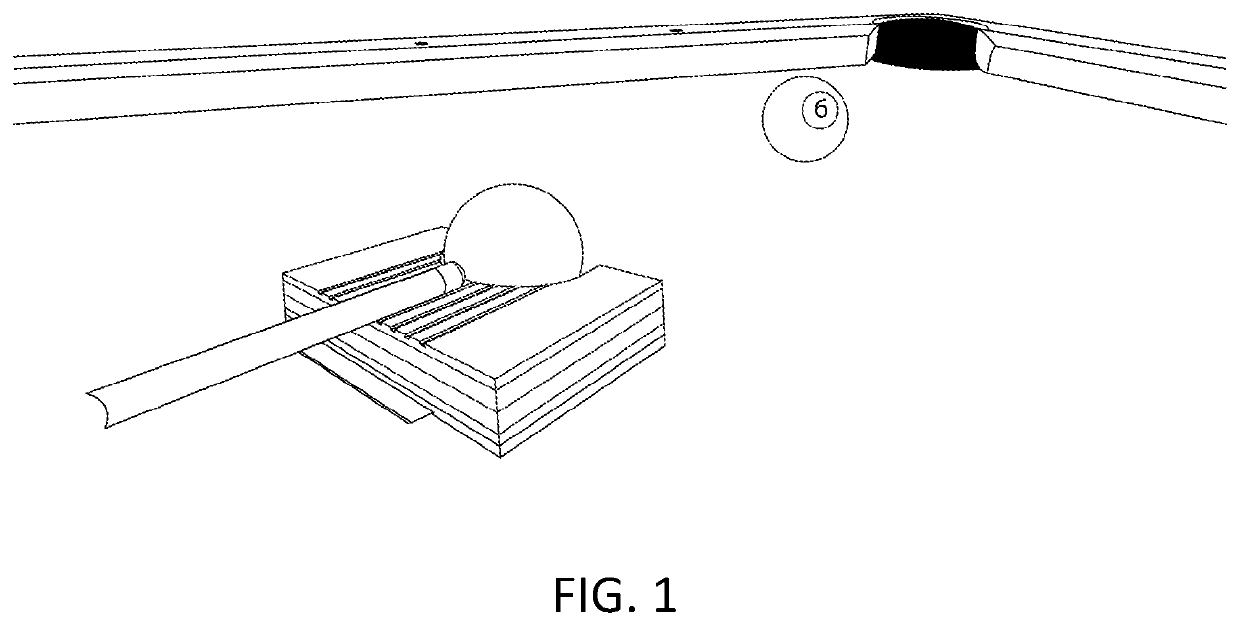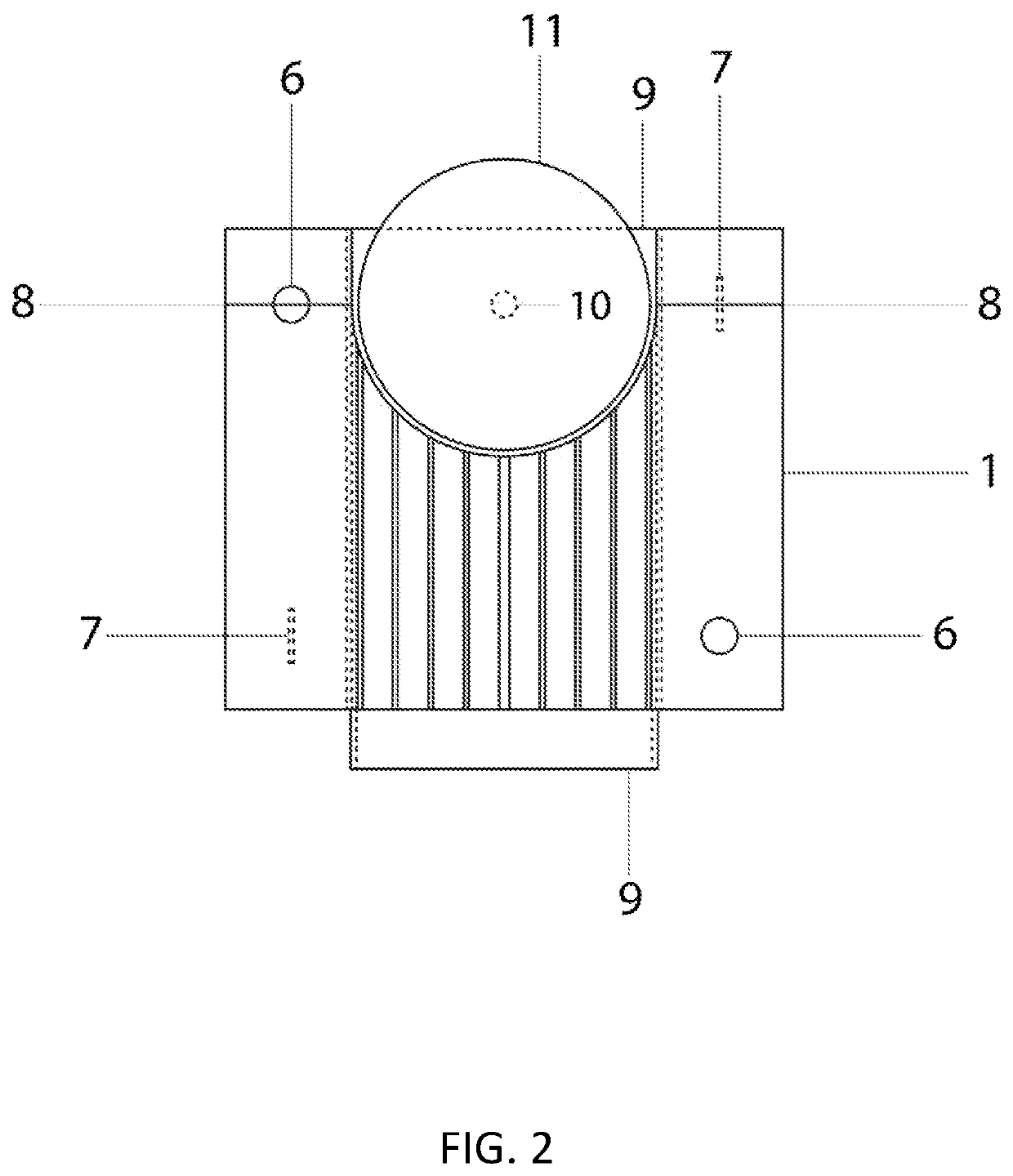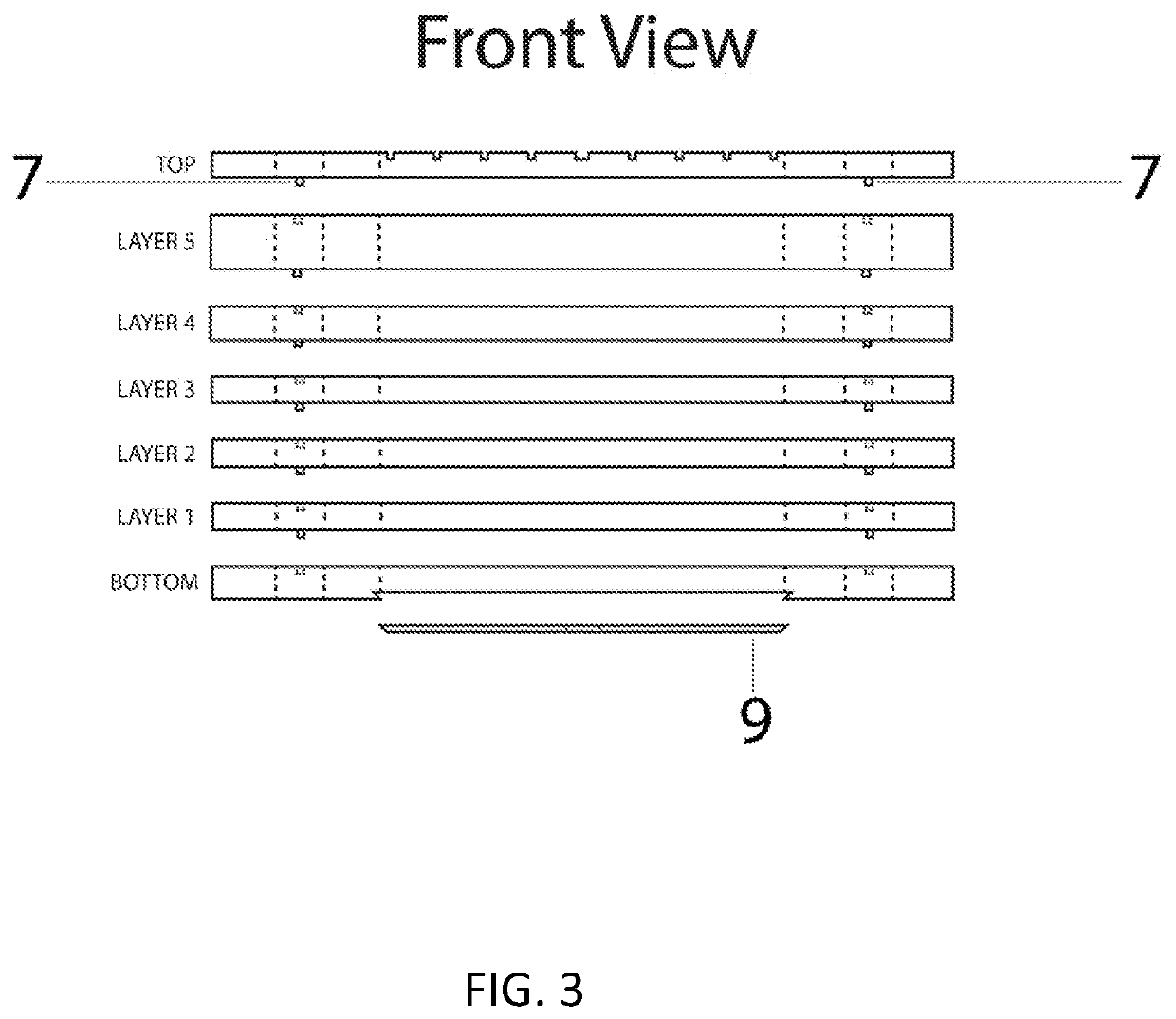A Billiard Training Device to Control the Cue Ball After Impacting a Target Ball
a cue ball and target ball technology, applied in the field of sports games, can solve the problems of difficulty in mastering the stroke necessary to produce the spin or ball movement desired, difficulty in implementing the method from books, tutorials and videos, and difficulty in teaching and/or helping players, so as to achieve the effect of improving the strok
- Summary
- Abstract
- Description
- Claims
- Application Information
AI Technical Summary
Benefits of technology
Problems solved by technology
Method used
Image
Examples
Embodiment Construction
[0047]Referring now to the drawings, FIG. 1 shows the cue shaft over the device and the cue ball placed in the center of the concave groove of the device. The cue shaft is ready to perform a shot to place ball No. 6 into the pocket.
[0048]FIG. 2 shows an upper view of the Top layer displaying the different features of the Top. FIG. 2 depicts the device body 1 having at least two magnets 6 and at least two securing knobs 7 that permit the different layers to attach one to another. In addition, FIG. 2 shows the Slider 9 containing a cue ball hole 10 to always have the cue ball 11 in the center of the concave groove 13 shown in FIG. 5. The FIG. 2 shows a pair of horizontal lines 8 that help the player to visualize the center of the cue ball 11 when it is placed on the concave groove 13 of the device.
[0049]FIG. 3 shows a front view of the device containing the seven different stackable layers. The number of each stackable layer is shown on the left side of the device. FIG. 3 shows how th...
PUM
 Login to View More
Login to View More Abstract
Description
Claims
Application Information
 Login to View More
Login to View More - R&D
- Intellectual Property
- Life Sciences
- Materials
- Tech Scout
- Unparalleled Data Quality
- Higher Quality Content
- 60% Fewer Hallucinations
Browse by: Latest US Patents, China's latest patents, Technical Efficacy Thesaurus, Application Domain, Technology Topic, Popular Technical Reports.
© 2025 PatSnap. All rights reserved.Legal|Privacy policy|Modern Slavery Act Transparency Statement|Sitemap|About US| Contact US: help@patsnap.com



